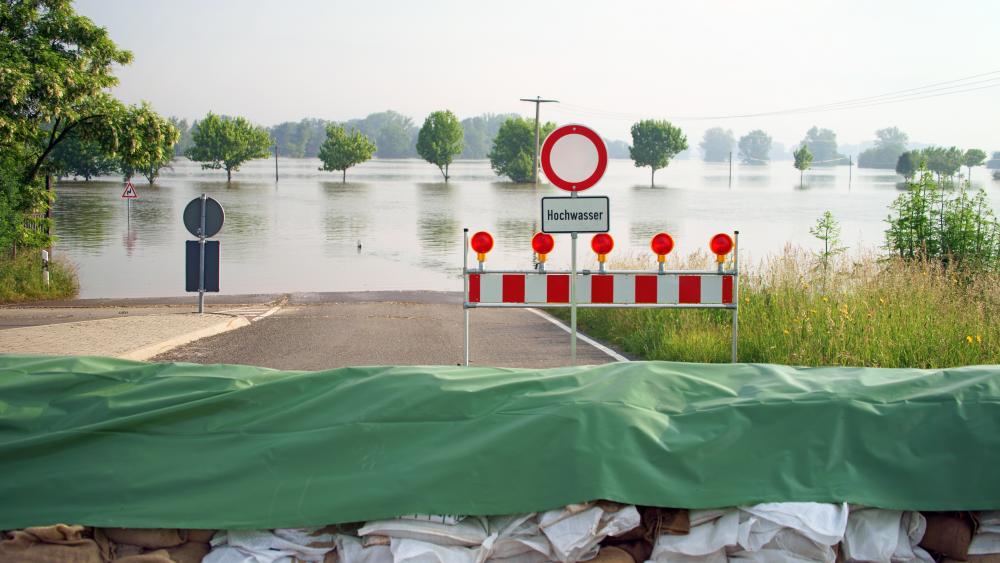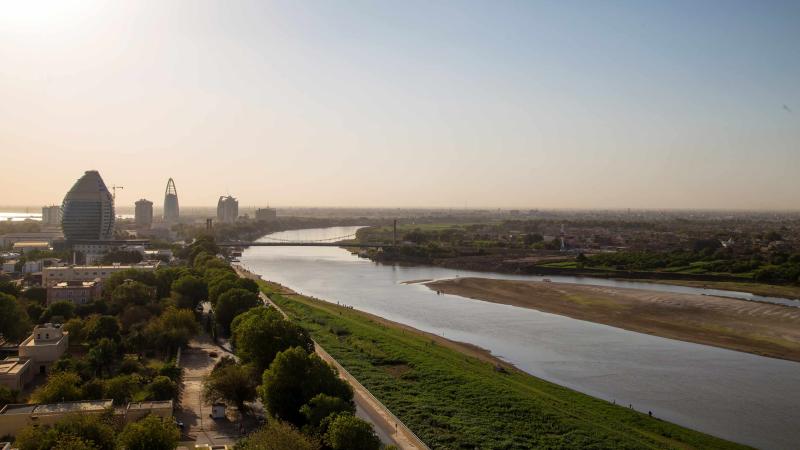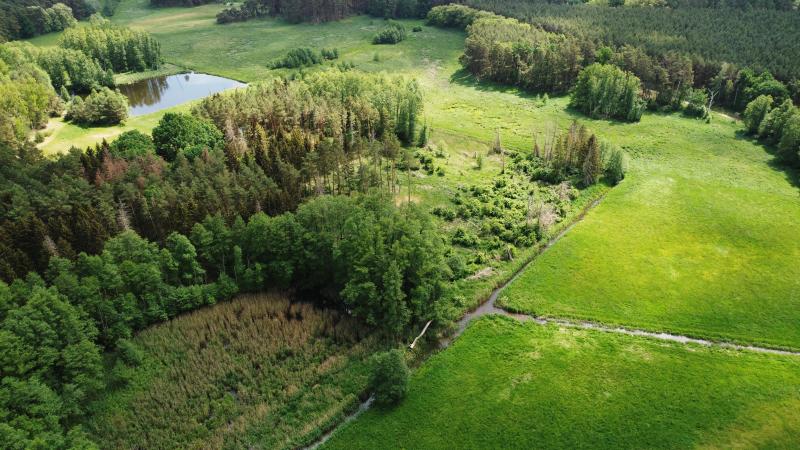
Giving rivers more space is the most reasonable flood protection. | Photo: fotolia PhotographyByMK
"Conventional technical flood protection strongly interferes with the structure of water bodies, is expensive, usually rigid and cannot easily be adapted to increased flooding regimes resulting from environmental change. The measures also restrict the natural functions of floodplains, which include water storage and the improvement of water quality. In addition, habitats for many animal and plant species in and around water are lost and with them a multitude of benefits for us humans. That is why we need significantly more flood control concepts worldwide with multiple benefits for the population and the environment," said IGB researcher Sonja Jähnig, author of the study.
Conventional flood control can give a false sense of security
Structural measures such as dykes, dams and artificial canals promote urban and agricultural development in areas that actually serve the purpose of flooding - the floodplains. As a result of these structural measures, the area thus gained is less likely to be affected by small to medium floods. This often gives the impression that the flood risk has been averted. As a result of this false sense of security, the local population underestimates the risk of rare large-scale floods and is all the more susceptible to their consequences. This so-called "levee effect" exemplifies the fact that some human adaptations that are effective in the short term actually increase the long-term vulnerability of the entire system.
Flood protection with multiple benefits scientifically studied
Today, new projects for the restoration of rivers and floodplains emerge. However, only a few of them are planned in such a way that they achieve multiple improvements at the same time, i.e. for example reduce flood risk, restore habitats and increase adaptability to climate change. The research team therefore studied four of these "multi-benefit projects" in Germany and in California (USA) and characterised their drivers, chronology and the measures and obstacles implemented. The researchers also analysed the political framework conditions that promote, enable and sometimes hinder such projects.
Examples from Germany: Dike relocation on the Elbe and large gravel banks for the Isar River
As an example for Germany, the team examined, on the one hand, the dyke relocation on the Middle Elbe near Lenzen. "The scientific confirmation that the flood peak was reduced locally by almost 50 centimetres and the far-reaching spatial protective effect against flooding helped to increase the acceptance of dyke relocations. This has not been measured so clearly before and has refuted the position that dike relocations do nothing for flood protection. Since then, similar projects have been implemented in other rivers in Germany," said Christian Damm from the Karlsruhe Institute of Technology, author of the study. The ecological success of the project could be seen in the rapid return of numerous water and other bird species as well as a variety of restored habitat types.
As a second project, the researchers studied an eight-kilometre-long river restoration of the Isar that stretches from the southern city limits of Munich to the city centre – the so-called Isarplan. The project shows that river and floodplain restoration is possible even in densely populated urban areas. The Isarplan had three main goals: Minimising flood risk, restoring habitats in the river and improving recreational use. "The Isarplan exemplifies the multiple-benefit approach and stands out due to a very cooperative planning process," said Jürgen Geist, researcher at TU-Munich and author of the study. The flood risk was reduced mainly by giving the river more space with at least 90 instead of 50 metres. This also increased the capacity in the urban area to buffer larger amounts of water. Rock walls and concrete embankments that stabilised the riverbanks were removed and replaced by gravel, so that gravel banks could form - creating spawning grounds and habitats for the huchen (Danube salmon) and other endangered fish species.
Examples USA: Restoration of ecosystems were actually side effects
In the USA, researchers analysed flood bypasses in the Sacramento River basin. The Yolo Bypass is a "floodplain bypass", a type of flood diversion with a large surface area, long residence times and high ecological potential. Most of the 240-square-kilometre area is privately owned and is used for agriculture in the dry season, when the floodplain is largely drained, for example to grow maize, sunflowers and rice, as pasture or fallow land. The remaining 65 square kilometres are a protected area, especially for birds and fish. "The Yolo Bypass is considered a model for a well-managed social-ecological system: the public-private partnership works well. Species protection, flood protection and agriculture can be reconciled – and all this in the direct vicinity of a large city," Sonja Jähnig explained. The dike reclamation and floodplain restoration on the Bear and Feather Rivers were also successfully implemented to increase local flood protection. An additional low wetland - a floodplain swale - created additional flooded habitat for native fish.
In the two American cases, flood risk reduction was the primary driver for the project – and restoration of natural ecosystems followed unintentionally in one case, and as a condition for receiving public funding in the other.
Findings from the project comparison: 7 factors that matter
Based on the four case studies, the researchers identified seven factors that, depending on how they are expressed, can either promote or inhibit multiple-benefit projects. These include obvious factors, such as the availability of (undeveloped) land, the integration of research knowledge into planning and decision-making processes, suitable political and regulatory framework conditions, or sufficient funding. But social factors are also crucial – the perception of flooding not only as a threat but as a positive element and essential feature of natural water bodies. The goal-oriented project management and constructive cooperation of all participants also turned out to be indispensable for the success of the project. Even though these projects appear to be very good examples today, they were only the result of an interplay of several favourable factors and all required dedicated perseverance to finally be realised, the researchers judge. "This is also related to the fact that there is still comparatively little practical experience from such multiple-benefit projects, but one is confronted with relatively large obstacles of an institutional and legal nature. Therefore, it is important to analyse successful examples in detail and to prepare the success and risk factors for other actors who want to realise such projects," explained Jürgen Geist.
Recommendations for policy-makers and authorities
Overall, the scientists conclude that ecological flood protection is more cost-efficient than previous approaches, has great synergy potential and such multiple-benefit approaches should therefore be increasingly considered by politics and administration. "Especially in Germany, floods are quickly seen negatively or as a risk – but their value for nature and the population is overlooked. In this context, the lack of floodplains is often a point of discussion. It would be desirable if the responsible political and administrative levels of the federal, state and local governments would develop efficient approaches to provide the necessary land," Sonja Jähnig emphasised.
These efforts would also contribute to European and national environmental goals, such as the European Flood Risk Management Directive, the Water Framework Directive, the Habitats Directive as well as the EU Biodiversity Strategy – the latter envisages, among other things, the restoration of 25,000 kilometres of rivers in Europe. The framework "Action Programme Natural Climate Protection" recently presented by the Ministry of the Environment and the Ministry of Consumer Protection points in the right direction with the first two fields of action "Protection of intact moors and rewetting" and "Near-natural water balance with living rivers, lakes and floodplains". According to Sonja Jähnig, it is now crucial to design the programme in such a way that as many synergy effects as possible can be achieved.





